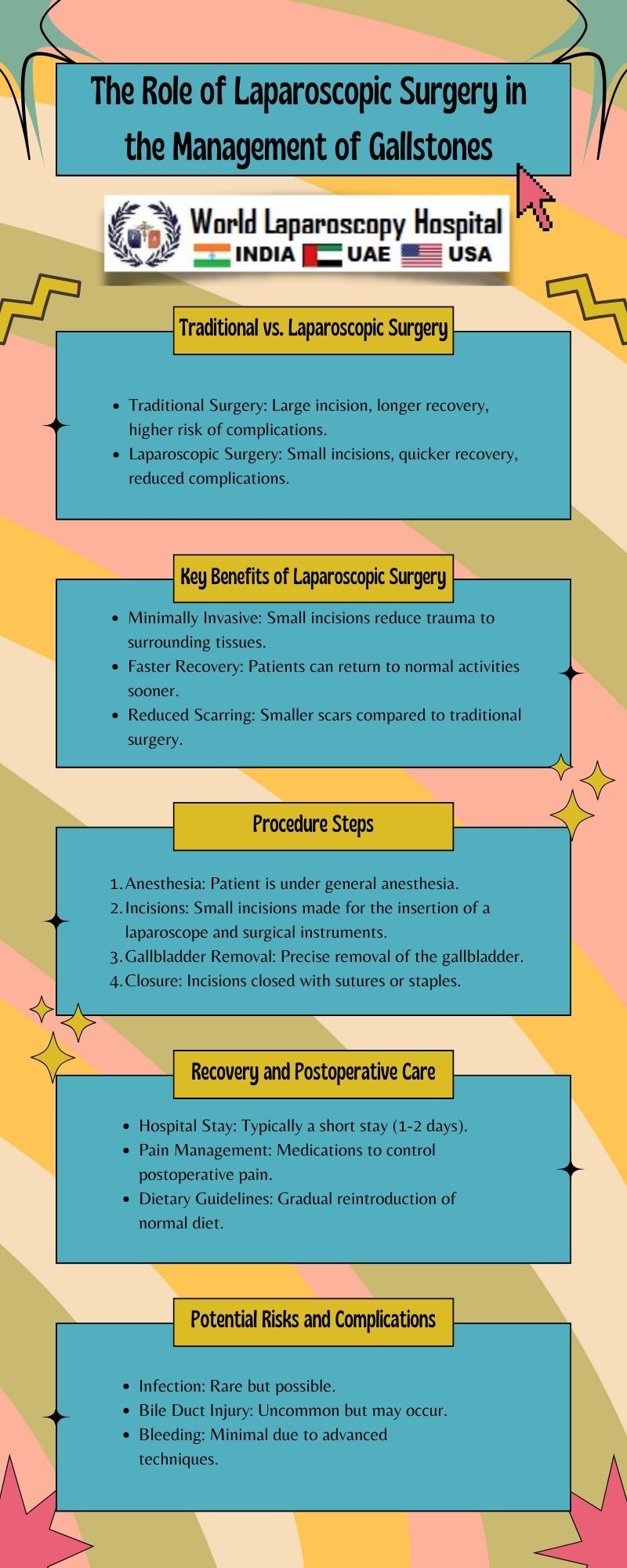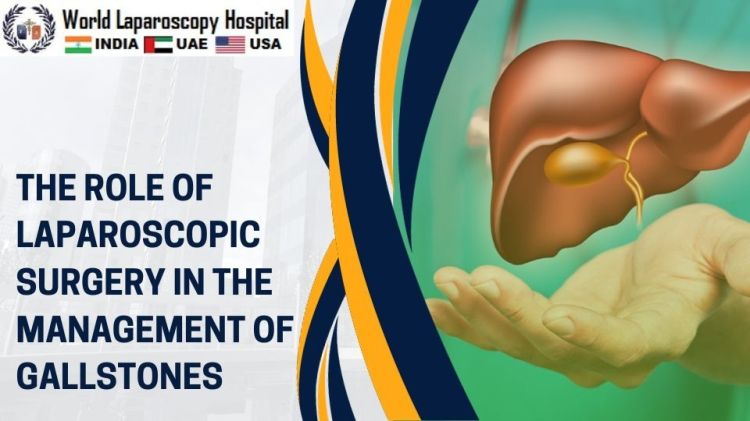The Role of Laparoscopic Surgery in the Management of Gallstones
Introduction:
Gallstones, a common ailment affecting millions worldwide, often require surgical intervention for effective management. In recent decades, laparoscopic surgery has emerged as a revolutionary approach, transforming the landscape of gallstone treatment. This minimally invasive technique offers several advantages over traditional open surgery, providing patients with a faster recovery and reduced postoperative complications.

The Basics of Gallstones:
Gallstones, crystalline deposits in the gallbladder, can cause pain, inflammation, and complications if left untreated. Traditional treatment involved open surgery, a method with inherent risks and a more extended recovery period. Laparoscopic surgery, also known as keyhole surgery, has since emerged as a game-changer in the field.
The Laparoscopic Advantage:
Minimal Incisions, Maximum Benefits:
Laparoscopic surgery involves small incisions, typically ranging from 0.5 to 1.5 centimeters. This stands in stark contrast to traditional open surgery, which necessitates larger incisions. These smaller entry points result in less trauma to surrounding tissues, reduced postoperative pain, and faster healing.
Reduced Recovery Time:
One of the most significant advantages of laparoscopic surgery is the abbreviated recovery period. Patients often experience a quicker return to their daily activities, contributing to an overall improvement in their quality of life. This stands as a testament to the efficiency of the laparoscopic approach.
Precision and Visualization:
Laparoscopic procedures utilize specialized instruments and a camera (laparoscope) to provide high-definition visuals of the surgical site. Surgeons can navigate with enhanced precision, ensuring thorough removal of gallstones or, in severe cases, the gallbladder itself. This minimizes the risk of leaving behind residual stones and reduces the likelihood of recurrence.
Lower Infection Rates:
The smaller incisions in laparoscopic surgery also translate to a reduced risk of infection. This is a critical advantage, particularly in the context of abdominal surgeries where infection can lead to severe complications.
Patient-Centric Focus:
The patient experience is a central consideration in the evolution of surgical techniques. Laparoscopic surgery excels in this regard, offering a less invasive, more patient-friendly approach. From a cosmetic perspective, the smaller scars associated with laparoscopic incisions are not only aesthetically favorable but also contribute to a positive psychological impact on patients.
Challenges and Considerations:
While laparoscopic surgery has become the gold standard for many gallstone cases, it may not be suitable for everyone. Factors such as the size and composition of gallstones, the presence of complications, and the patient's overall health must be considered when determining the most appropriate course of action.
Conclusion:
Laparoscopic surgery has undeniably revolutionized the management of gallstones. Its benefits in terms of reduced invasiveness, faster recovery, and improved patient outcomes position it as a cornerstone in the modern surgical approach to gallstone-related issues. As technology continues to advance, it is likely that laparoscopic techniques will evolve even further, providing an increasingly refined and patient-centric solution to gallstone man
